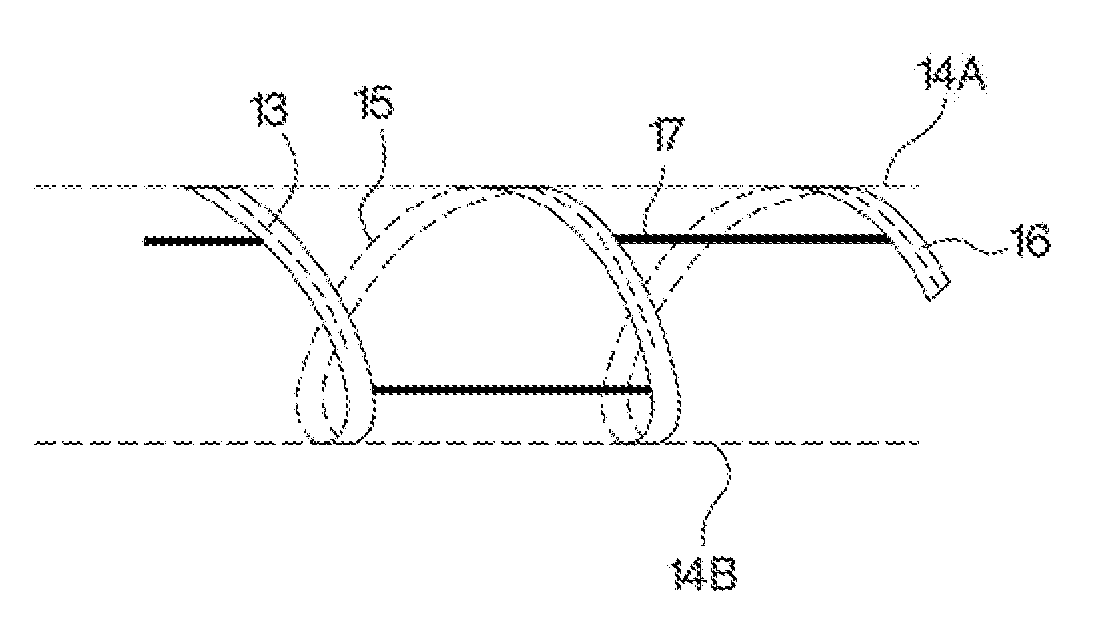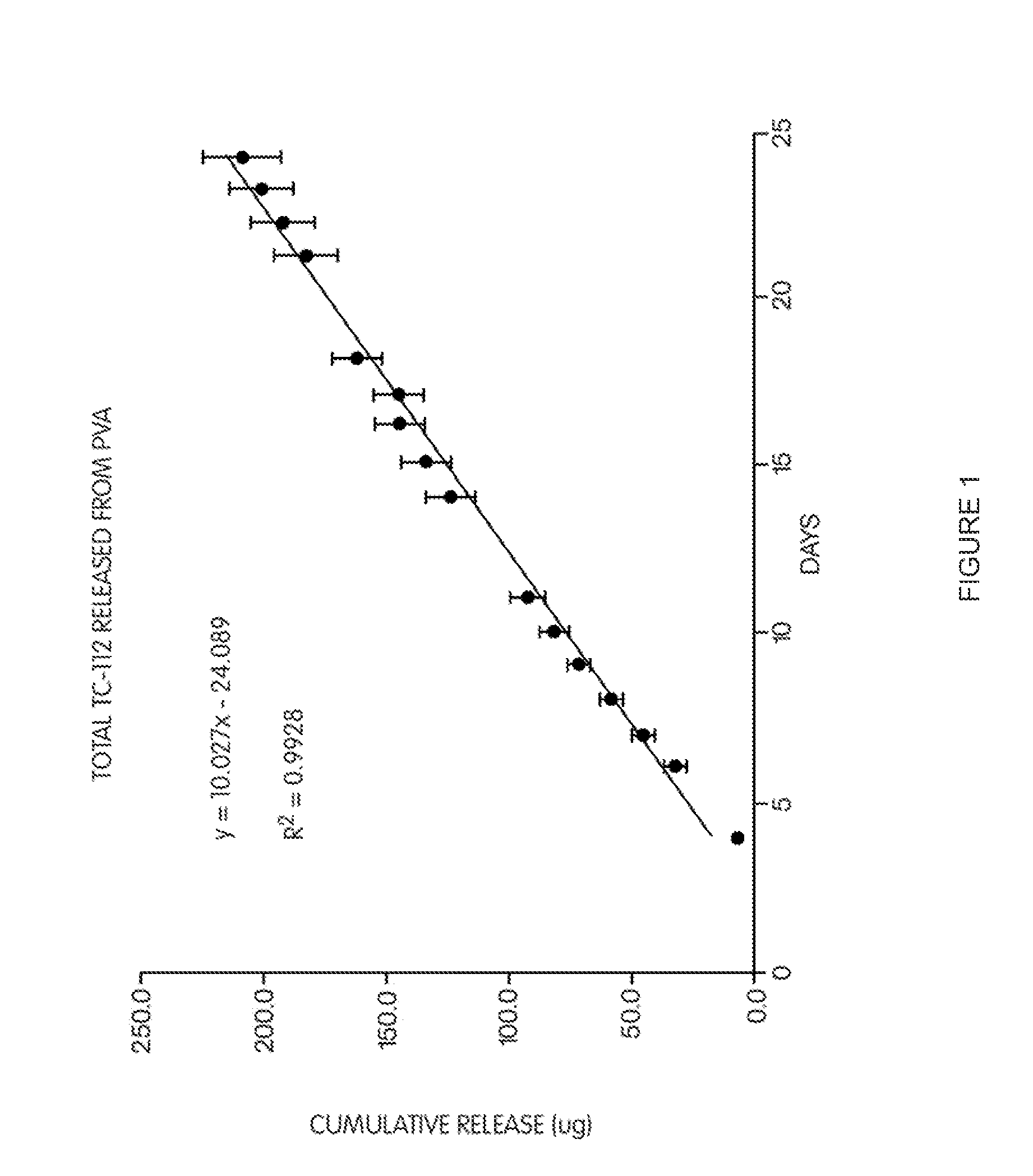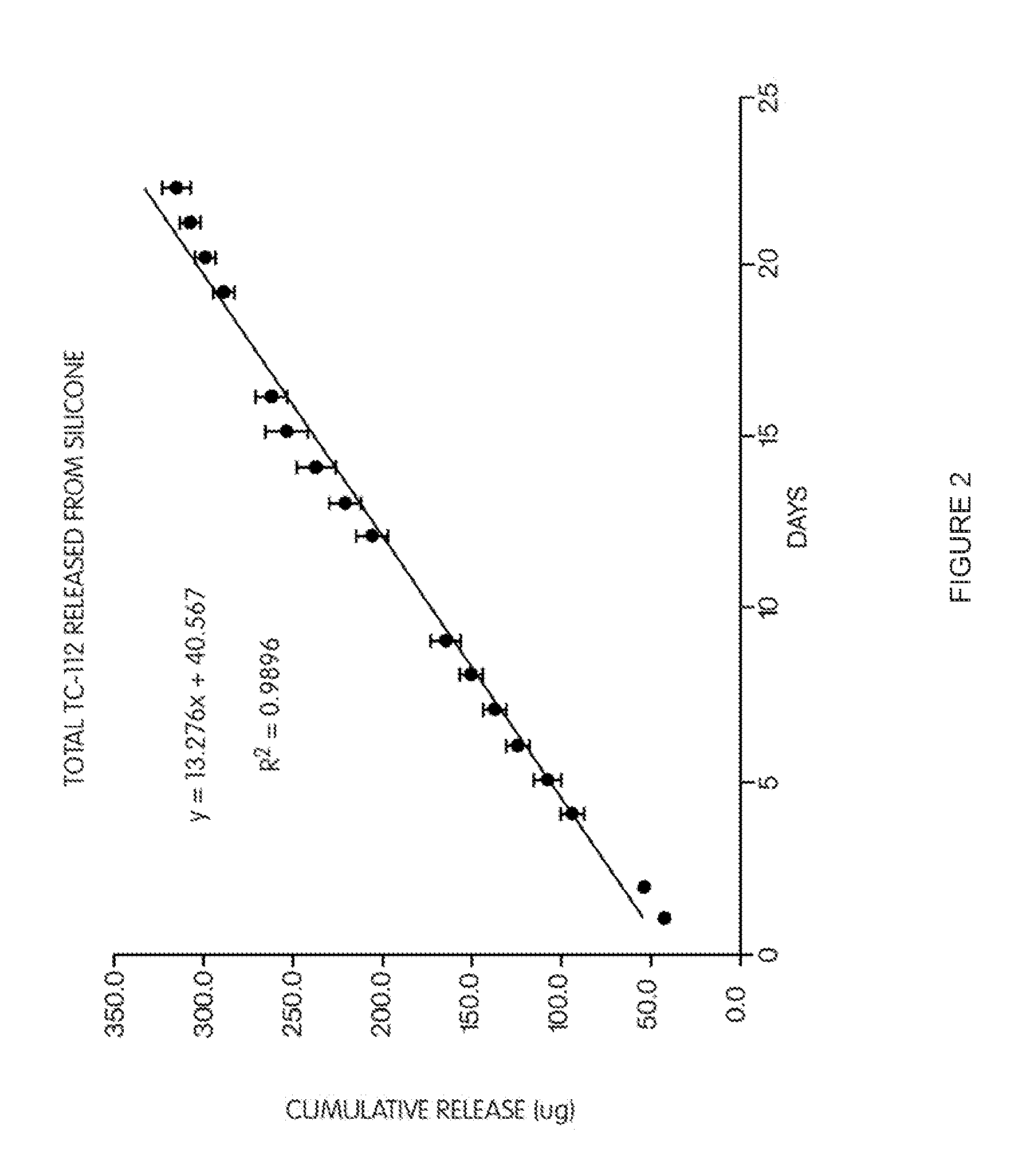Polymer-based, sustained release drug delivery system
a drug delivery system and polymer technology, applied in the direction of drugs, prostheses, immunological disorders, etc., can solve the problems of increasing the risk of post-operative hemorrhage, problems associated with implanted surgical devices, and limited success in the field of prior art attempts to solve this problem, so as to reduce the interaction
- Summary
- Abstract
- Description
- Claims
- Application Information
AI Technical Summary
Benefits of technology
Problems solved by technology
Method used
Image
Examples
example 1
[0158]To 20 gm of 10% (w / v) aqueous poly(vinyl alcohol) (PVA) solution, 80.5 mg of prodrug TC-112 was dispersed. 5 pieces of glass plates were then dipping coated with this TC-112 / PVA suspension and followed by air-drying. The coating and air-drying was repeated four more times. At the end about 100 mg of TC-112 / PVA was coated on each glass plates. The coated glass plates were then heat treated at 135° C. for 5 hours. After cooling to room temperature, the glass plates were individually placed in 20 ml of 0.1 M mol phosphate buffer (pH 7.4, 37° C.) for release test. Sample was taken daily and entire release media were replaced with fresh one at each sampling time. The drugs and TC-112 released in the media were determined by reverse-phase HPLC. The half-life for TC-112 in pH 7.4 buffer is 456 min, in serum is 14 min.
[0159]The results are shown in FIG. 1, which shows the total cumulative release of TC-112 from PVA coated glass plates. The slope of the curve demonstrates that TC-112 i...
example 2
[0160]12.0 gm of silicone part A (Med-6810A) were mixed with 1.2 gm of silicone part B (Med-6810B), and degassed in sonicator for 10 min, followed by water aspirator. 41.2 mg of (TC-112) were dispersed in this degassed silicone, and degassed again. 0.2 gm of the mixture was spread on one surface of a glass plate. The glass plates (total 5) were then placed in oven and heated at 105° C. for 20 min. to cure. After removing from the oven and cooled to room temperature, 0.2 gm of the mixture was spread on the other uncoated surface of each glass plate. The coated glass plates were then heat treated again at 105° C. for 20 min. After cooling to room temperature, the glass plates were individually placed in 20 ml of 0.1M phosphate buffer (pH 7.4, 37° C.) for release test. Samples were taken daily, and the entire release media was replaced with fresh media at each sampling time. The drugs (5FU and TA) and TC-112 released in the media were determined by HPLC.
[0161]The total TC-112 release f...
example 3
[0163]A mixture of 3.3 gm Chronoflex C(65D) (Lot# CTB-G25B-1234) dispersion containing 0.3 gm of Chronoflex C(65D) and 2.2 gm Chronoflex C(55D) (Lot# CTB-121B-1265) dispersion containing 0.2 gm of Chronoflex C (55D), both in dimethyl acetamide (DMAC) (1:10, w / w) was prepared by mixing the two dispersions together. To this mixture, 6.0 gm of tetrahydrofurane (HPLC grade) were added and mixed. The final mixture was not a clear solution. Then 101.5 mg of a co-drug of 5-fluorouracil (5FU) and triamcinolone acetonide (TA) (the co-drug being defined as “TC-32”) was added and dissolved into the polymer solution.
[0164]Ten (10) HPLC inserts were then coated with the polymer / TC-32 solution by dipping, which was then followed by air-drying under ambient temperature. The coating and air-drying process was repeated four (4) times (5 times total) until a total of about 10 mg of polymer / TC-32 was applied to each insert. The inserts were then placed in an oven at 80° C. for two hour to remove the r...
PUM
| Property | Measurement | Unit |
|---|---|---|
| Fraction | aaaaa | aaaaa |
| Time | aaaaa | aaaaa |
| Density | aaaaa | aaaaa |
Abstract
Description
Claims
Application Information
 Login to View More
Login to View More - R&D
- Intellectual Property
- Life Sciences
- Materials
- Tech Scout
- Unparalleled Data Quality
- Higher Quality Content
- 60% Fewer Hallucinations
Browse by: Latest US Patents, China's latest patents, Technical Efficacy Thesaurus, Application Domain, Technology Topic, Popular Technical Reports.
© 2025 PatSnap. All rights reserved.Legal|Privacy policy|Modern Slavery Act Transparency Statement|Sitemap|About US| Contact US: help@patsnap.com



